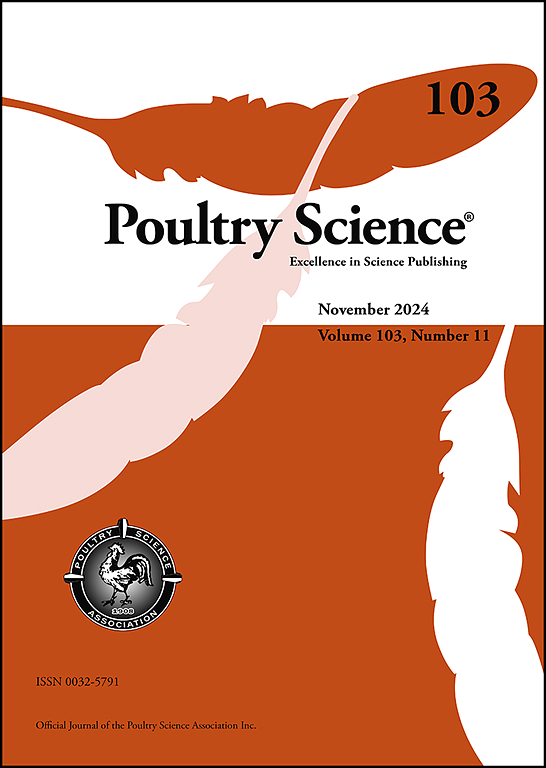Dietary bile acid supplementation influences protein digestibility and alters plasma amino acid profiles in broiler chickens fed conventional and reduced-protein diets
IF 3.8
1区 农林科学
Q1 AGRICULTURE, DAIRY & ANIMAL SCIENCE
引用次数: 0
Abstract
Reduced crude protein (CP) diets based on wheat have been shown to lower body weight (BW), increase feed conversion ratio (FCR), and elevate fat-pad deposition in broiler chickens. Bile acids facilitate lipid digestion and nutrient absorption by emulsifying fats and promoting micelle formation in the intestine. Therefore, it was hypnotized that supplementing reduced CP diets with bile acids may enhance fat utilization, improve energy efficiency, and mitigate the negative effects of low-CP diets on broiler performance and nutrient digestibility. Four dietary treatments were arranged in a 2 × 2 factorial layout, with two CP levels (standard and a 30 g/kg CP reduction), with or without 0.2 g/kg bile acids. A total of 840 off-sex male Ross 308 chicks were randomly assigned into 24 floor pens, with six replicates of 35 birds per treatment. From 0 to 42 days post-hatch, there was no interaction between dietary CP and bile acids supplementation for BW, feed intake (FI), FCR, abdominal fat pad, and nutrient digestibility (P > 0.05). As a main effect, reducing dietary CP decreased BW, FI, fat digestibility, and increased FCR and abdominal fat pad (P < 0.01). The reduced CP diet resulted in lower plasma concentrations of valine, isoleucine, arginine, histidine, phenylalanine, leucine, and tryptophan, while increasing lysine, methionine, and threonine concentrations (P < 0.01). Bile acids supplementation enhanced dry matter and protein digestibility (P < 0.05). Bile acids also showed a tendency to increase plasma methionine concentrations (P = 0.055). A significant interaction effect was observed for overall mortality, with bile acids supplementation reducing mortality in birds fed reduced CP diets (P < 0.01). These findings suggest that in reduced CP diets, the current ideal AA profile may be deficient in arginine and histidine, potentially contributing to increased fat pad weight. Elevated wheat-derived non-starch polysaccharide concentrations might lower fat digestibility in reduced CP diets. Supplementation of bile acids in these diets could mitigate endogenous taurine losses and improve overall health in broiler chickens.
求助全文
约1分钟内获得全文
求助全文
来源期刊

Poultry Science
农林科学-奶制品与动物科学
CiteScore
7.60
自引率
15.90%
发文量
0
审稿时长
94 days
期刊介绍:
First self-published in 1921, Poultry Science is an internationally renowned monthly journal, known as the authoritative source for a broad range of poultry information and high-caliber research. The journal plays a pivotal role in the dissemination of preeminent poultry-related knowledge across all disciplines. As of January 2020, Poultry Science will become an Open Access journal with no subscription charges, meaning authors who publish here can make their research immediately, permanently, and freely accessible worldwide while retaining copyright to their work. Papers submitted for publication after October 1, 2019 will be published as Open Access papers.
An international journal, Poultry Science publishes original papers, research notes, symposium papers, and reviews of basic science as applied to poultry. This authoritative source of poultry information is consistently ranked by ISI Impact Factor as one of the top 10 agriculture, dairy and animal science journals to deliver high-caliber research. Currently it is the highest-ranked (by Impact Factor and Eigenfactor) journal dedicated to publishing poultry research. Subject areas include breeding, genetics, education, production, management, environment, health, behavior, welfare, immunology, molecular biology, metabolism, nutrition, physiology, reproduction, processing, and products.
 求助内容:
求助内容: 应助结果提醒方式:
应助结果提醒方式:


